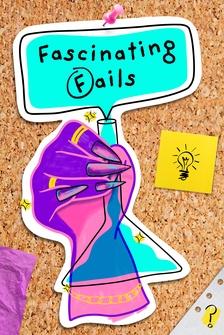- If you've lived on planet Earth for the past few decades, you know that there's one molecule that is really causing us some trouble.
Carbon dioxide.
- I was born onto the planet with carbon dioxide levels averaging around 350 parts per million.
But when this kid is born in 2021, it's going to be closer to 415 parts per million.
That's almost a 20% increase in just my life alone.
- We've put a lot of this stuff into the atmosphere, and spoiler alert, it's causing our planet to get warmer.
- Our question is, can we take it out?
- We've talked about it as a concept, but now I think there's actually impetus to work on this problem.
There's a recognition that there needs to be work done in this area, which I think is fantastic.
- It turns out some scientists have been taking inspiration from nature.
Chemical processes that have been happening for millions of years.
Using those to take carbon dioxide and turn it into solid stone.
(futuristic music) - We have a very special episode for you today.
One that you our audience actually voted for.
- That's right, your boat actually matters.
You wanted to know, can turning CO2 to stone help save the planet?
- To help answer this question, I sat down with Greeshma Gadikota, a chemical engineer at Cornell who is trying to turn gaseous CO2 into solid rock.
So why turn CO2 into stone?
We've heard of carbon sequestration already.
I think we've been doing it for a while.
- There are some parts of the world where CO2 is being captured.
It is being compressed and it is being pumped into sub-service environments.
It's like drilling a hole in the ground and pumping CO2 underground.
The challenge really becomes with monitoring and making sure that CO2 doesn't come back up to the surface again.
- But turning CO2 into rock could help solve this problem.
- Once you lock away that CO2, it's stored now it's a solid.
- Sounds complicated, but there's some good news here.
Chemistry can actually work in our favor.
- Exactly.
So this process of converting CO2 to stone is something that you can actually do in your house.
If you were to get lime water, which is rich in calcium, take a straw or breathe into it, you would actually start forming calcium carbonate.
- First as a control, we are going to try this with plain old tap water.
So this is water, and your breath has carbon dioxide.
Blow carbon dioxide into that water and let's see what happens.
- All right.
(water bubbling) I blew as hard as I could, but all I got was water all over the table.
So let's try Greeshma's idea and use lime water, which is a calcium rich solution sometimes using medicines antacids and lotions.
- Okay, now in this glass with the orangish-salmony colored straw, we're gonna force some of this stuff, which is lime water.
(upbeat music) So this is not a wine glass.
It's a lime glass.
(water bubbling) Look at that.
So you see how that's starting to get cloudier?
The cloudiness in the lime water is from small flakes of solid calcium carbonate.
Here's what's going on.
As carbon dioxide is introduced into water, some of it chemically combines with water molecules to form carbonic acid, which then dissociates to create carbonate ions.
Those carbonate ions can react with other elements like magnesium or calcium to create new compounds that are actually solids, that don't dissolve much in water.
In the lime water there's lots of calcium, so it's making calcium carbonate spontaneously.
- So this process of taking CO2 and turning it into stone is an energetically favorable pathway.
- [Caitlin] That energetically favorable pathway is the key to this solution.
Turning CO2 into say fuel or other products requires that we add energy.
Turning it into stone, just happens naturally.
- [Arlo] This is even how a lot of sea creatures make their shells, and one way limestone rocks are made.
In fact, this is one way that our planet naturally takes carbon dioxide out of the ocean atmospheric system.
It just takes the planet a long time.
- What we do need to do now is to make these processes more efficient.
So that's where the science is married to the engineering, and we can make these processes of taking CO2 and converting them into stone much, much faster.
- But how can we scale this up in the real world?
I mean, it's not like we can just blow all our emissions into lime water.
- For that we're going to have to meet up with Alex, NOVA's New York based producer.
And here he is!
- Hey, how's it going?
- The man in the flesh.
- So here in New York at the Lamont-Doherty Earth Observatory, scientists like Angela Slagle are tackling the question of how we might be able to scale up turning CO2 into solid rock.
This is like a library of rocks.
- That's exactly what it is.
This is the Lamont Core Repository.
(tray sliding) So this is the core with markers in it to tell you what depths we're looking at in the core.
- [Alex] Ooh, and Angela explains to me that in this lab, there is actually a kind of rock that can help us turn CO2 into stone by making use of this natural chemical reaction.
It's called basaltic rock.
- Basaltic rocks come from volcanoes, both on land and beneath the sea.
Basaltic rocks are some of the most reactive rocks on Earth.
And it's those reactions that we need to convert CO2 into solid carbonate stone.
Carrying your rock baby.
We can enhance the natural weathering process of basaltic rocks.
It's a totally natural process.
- [Alex] Basaltic rocks naturally have calcium and magnesium in them.
So when water with carbon dioxide is injected into them, it should form calcium carbonate, just like our lime water glass.
But scientists expected it might be a lot slower.
- We had imagined that it's something that might take place over hundreds to thousands of years.
- [Alex] But in 2016, an Icelandic demonstration project called CarbFix found that the process of converting CO2 to stone in basaltic rock could take place in as little as two years.
Angela wants this process to happen on the sea floor, because it turns out there is a lot of basalt there.
- The ocean floor covers about 70% of Earth, and 90% of that ocean floor is made up of basaltic rocks.
- [Alex] But it turns out not all basalts are created equal.
She shows me exactly what we want in the perfect carbon reservoir.
- So this is a typical sea floor basalt formed on the mid-ocean ridge.
These kinds of rocks are our reservoir.
These are basalts of a different variety.
They're very low porosity.
These are what we would use as physical trapping mechanisms.
In order for carbon sequestration to work, we actually need both kinds of rocks.
The rocks that we're targeting to inject the CO2, where we want to turn that CO2 into carbonate minerals need pore space.
They need space for that injected CO2 to flow through.
We also need more dense rocks, rocks with very little pore space that sit on top of the porous rocks, and they act as a physical trap.
- But why are the oceans where Angela is looking?
Oh, wow.
She showed me a special kind of map that explains.
So this is like no map I've ever seen before.
What is this?
- [Angela] What you're looking at is the sea floor if you take the world's oceans away.
- And like, what is this?
This looks like a spine going down the Atlantic Ocean.
- This is the Mid Ocean Ridge System.
You can see it runs all around the Earth, and it's the place where ocean floor forms.
- [Caitlin] It's at these mid ocean ridges where new basaltic rock is formed.
It actually makes up an important part of the Earth's plate tectonic motion.
And this is why so much of the ocean floor is made up of this special kind of rock.
- Just look at the sea floor.
It covers 70% of the earth.
The scale of storage that's available off shore could hold hundreds to thousands of years of CO2 emissions.
- We basically have almost the whole ocean to work with, especially with these ridges.
But Angela does have her eye on a few specific locations that might be particularly compelling for carbon sequestration.
First, the Cascadia Basin in the Pacific Northwest.
- So the Cascadia Basin, this ridge section here is called the Juan de Fuca Ridge.
- And it's so close to land.
- [Angela] That's right.
- [Caitlin] Seattle, Vancouver and Portland, cities that create emissions, are only a few hundred miles from this mid-ocean ridge.
- So you can imagine if you're injecting CO2 to turn it into carbonate rocks here, you've got all these sources of CO2 in really close proximity.
I think a demonstration project in a region like Cascadia may be in the next five to 10 years.
- [Caitlin] Another particularly exciting spot, the Kerguelen Islands.
- Those are right down here.
The Kerguelen Islands are located in a place where the winds are strong and steady throughout the year.
The possibility for wind power to support CO2 injection is really great there.
- [Caitlin] To me, this sounds like the ultimate solution, a wind powered operation pulling CO2 out of the air and injecting it deep into the ocean floor, where it turns to stone and is locked away out of sight for millions of years.
The possibility feels so hopeful.
So what's stopping us?
- The cost of capturing, injecting and storing CO2 is still more expensive than the cost of emitting CO2.
- The urgency is now.
Globally we think about the need for economic growth, the need to pull millions of people out of energy poverty, and the need to at the same time, meet our climate goals.
It is likely that we will need to have different stages of CO2 capture into more technologies.
- Turning CO2 to stone feels like an exciting prospect, and many are studying different ways to do this at sea and on land, but turning our carbon emissions into rocks isn't enough to solve the global climate crisis.
- We're going to have to reduce emissions where we can.
We can't continue business as usual.
- From her lime glass to seashells, to the common rocks that comprise the ocean floor, it seems that the Earth that we already know could very well contain part of the solution to this very modern problem.
- [Caitlin] If you want to learn more about the CarbFix project in Iceland, or discover other technologies that scientists are devising to get carbon dioxide out of the atmosphere, or how some are even starting to examine the possibility of solar geoengineering, check out NOVA's documentary film "Can We Cool the Planet?"
available on the PBS app or on NOVA's YouTube page.
(majestic music) (tranquil music)















